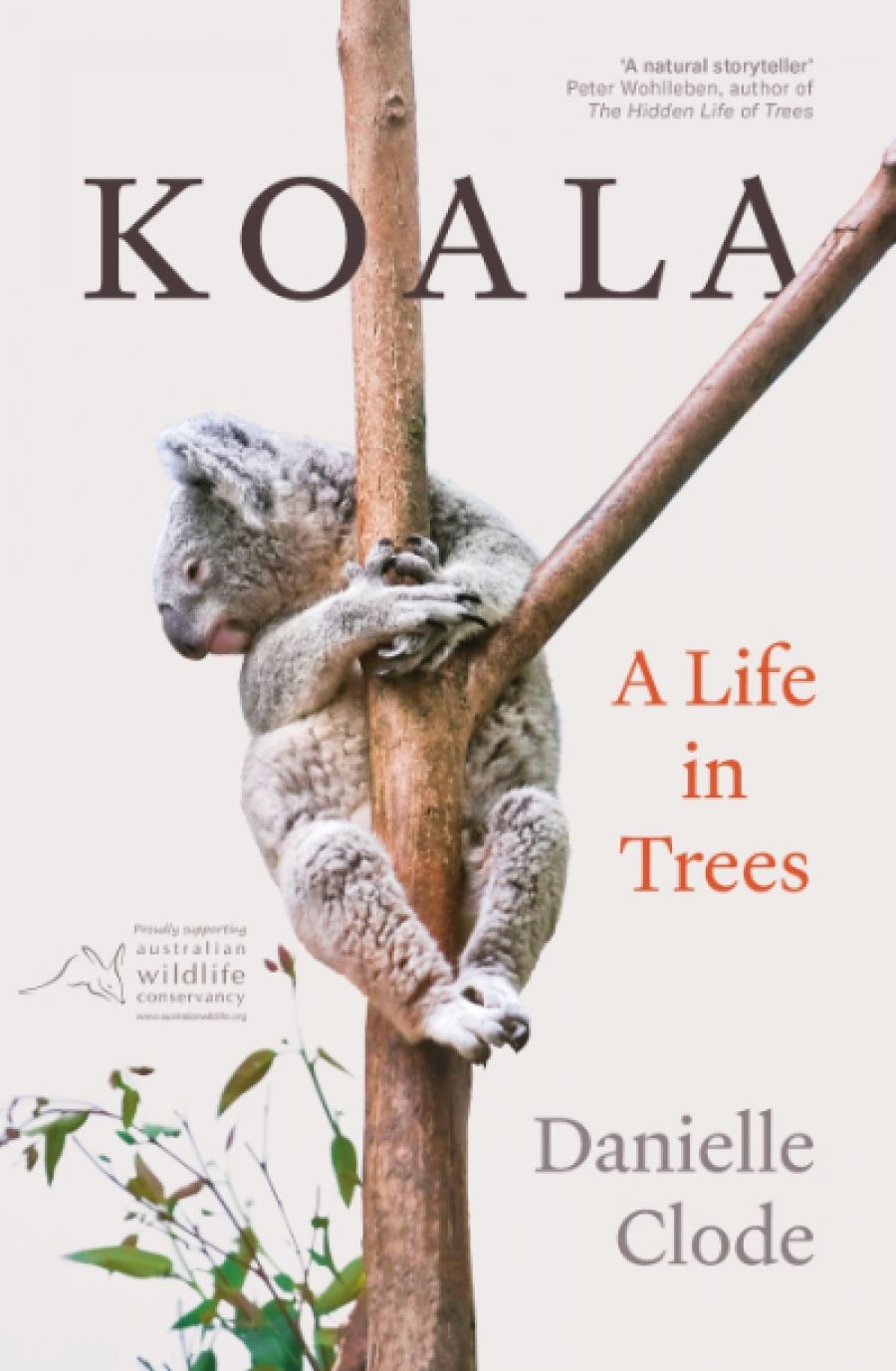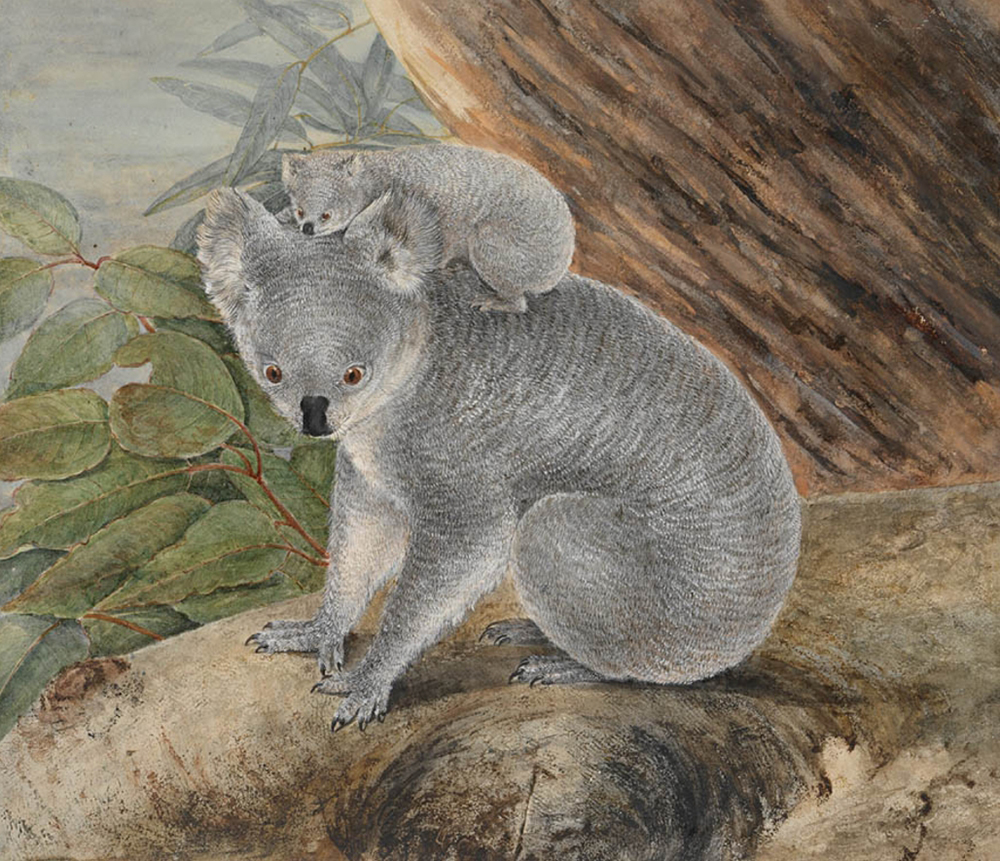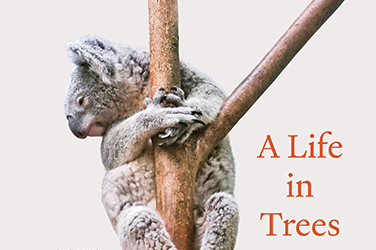
- Free Article: No
- Contents Category: Environmental Studies
- Review Article: Yes
- Article Title: The fluffy ambassador
- Article Subtitle: A wide-ranging look at the koala
- Online Only: No
- Custom Highlight Text:
This is the third book dedicated to the koala that I have reviewed in ABR in the past fourteen years. That level of attention says much about the place we hold in our hearts for this endearing marsupial. It also relates to the fascinating natural and social history of the koala, along with the wildlife management conundrums it throws up. The koala is probably the most widely recognised of Australia’s animal species. It is also probably the most studied of our roughly 380 mammalian species, so there is a strong knowledge foundation around which to build a good story.
- Article Hero Image (920px wide):

- Article Hero Image Caption: <em>Koala and young</em>, 1803, by J.W. Lewin (photograph via the State Library of NSW)
- Alt Tag (Article Hero Image): Koala and young, 1803, by J.W. Lewin (photograph via the State Library of NSW)
- Featured Image (400px * 250px):

- Alt Tag (Featured Image): Peter Menkhorst reviews 'Koala: A life in trees' by Danielle Clode
- Book 1 Title: Koala
- Book 1 Subtitle: A life in trees
- Book 1 Biblio: Black Inc., $34.99 pb, 323 pp
- Book 1 Readings Link: booktopia.kh4ffx.net/Ryq41y
I have been actively involved in koala management and conservation for some thirty years. Here, I found almost nothing to object to or even quibble over, testament to Clode’s familiarity with koala behaviour (she lives among a dense population near Adelaide), combined with her biology background. Her understanding of the differences between the threats faced by koalas in the northern and southern parts of its broad distribution through eastern Australia has produced clear and reasoned statements on the differing conservation status and management needs in each area. Indeed, Clode’s portrayal of the conservation status of koalas in southern Australia is pragmatic and refreshing compared to the gloomy predictions and misrepresentations frequently emanating from Queensland and northern New South Wales. There, two debilitating diseases – Chlamydiosis and koala retrovirus (sometimes called koala AIDS) – add to the ever-present pressures resulting from loss and fragmentation of habitat due to the expanding human footprint. In southern populations, these two diseases, though present, are less pathogenic and consequently have a lower impact on population processes.
Southern populations have a unique history: steep declines caused by clearing, hunting, and bushfires around the turn of the twentieth century, fortunate preservation in island havens, followed by a sustained (ninety-nine-year!) translocation program that has seen the koala reintroduced to almost all remaining habitat in Victoria and South Australia. The only downside of this extensive translocation program is that genetic diversity has been lost as a result of the small numbers of founding individuals inevitably providing only a fraction of the genetic material present in the wider population. Happily, there is little evidence that southern populations are being constrained by this genetic shortcoming. Although difficult to predict, future negative impacts are more likely due to the rapid environmental changes being driven by climate change.
The book is divided into six parts, each with several subsections. The parts are introduced by a short fictional account describing elements of a koala’s life in its forest environment from the koala’s viewpoint. This device is presumably aimed at scene-setting and personalising the detailed material that follows. Overall, this insertion of a slice of fiction into a work of non-fiction succeeds, providing segues between the parts and enlivening the reader’s experience by adding a koala’s perspective to the narrative, highlighting the daily pressures faced by individual koalas. It takes a sound ecological understanding to pull this off without falling into the traps of anthropomorphism or cloying sentimentalism.
The last chapter continues this theme. It begins with a description of a koala’s perfect world, again demonstrating Clode’s nuanced understanding of koala ecology and the natural forces that affect koala populations, for better and worse. She clearly articulates that, even in a perfect world, not all individuals can lead perfect lives. Some individuals are forced into sub-optimal habitat and may not successfully breed or even survive; others succumb to natural diseases. What matters is whether enough new individuals are recruited into the population and manage to breed successfully, thus counteracting the death rate. Too many people in our modern world do not seem to comprehend that individual mortality and population persistence are two very different things.
This focus on the individual is amplified for ‘cute’ animals such as the koala, but it is true for all life forms. The worldwide popularity of the koala owes much to its appearance: with its round, forward-facing eyes, lack of a snout, and large fluffy ears, it resembles a combination of teddy bear and human infant. But that is not a rational reason for giving it top conservation priority. As Clode points out, there are many species of Australian flora and fauna more immediately threatened than the koala. Despite this, in the aftermath of the 2019–20 Black Summer bushfires, people from around the world donated millions of dollars to Australian conservation organisations. They were frequently motivated by a heartfelt need to ‘save the koalas’. Perhaps then, the most important role for the koala is as an ambassador for the rest of Australia’s embattled nature. To this end, Danielle Clode has written an important book that focuses on the koala but is really an impassioned and informed plea for the conservation of Australia’s flora, fauna, and wild places. This is natural history and science writing at its best.


Comments powered by CComment